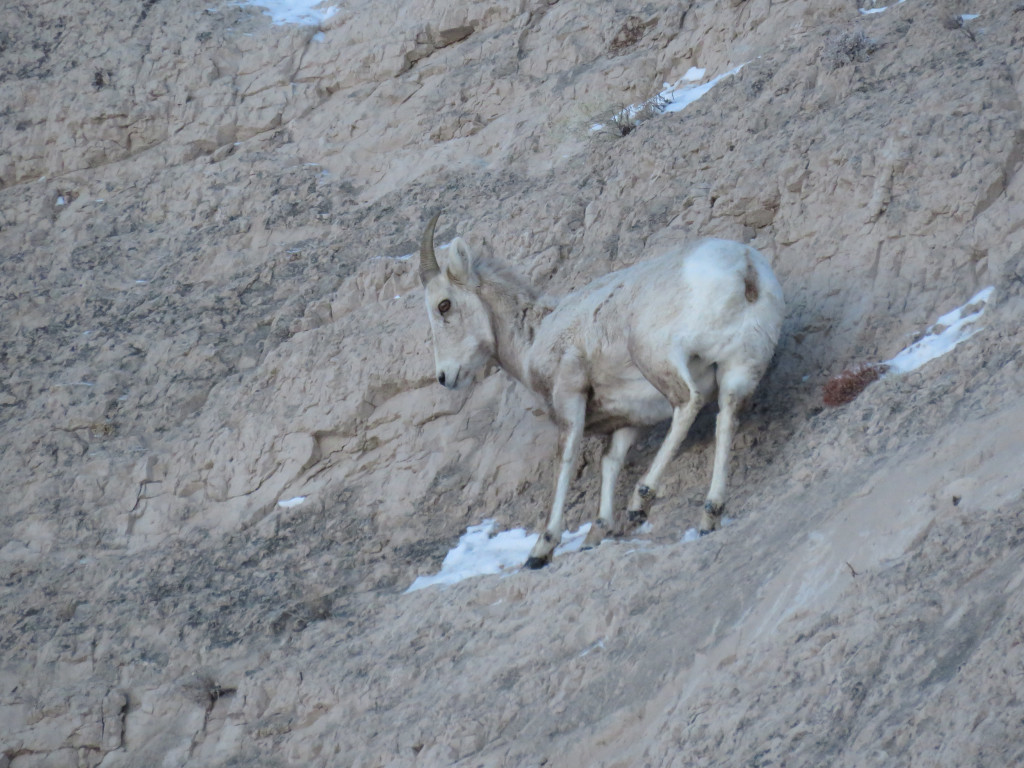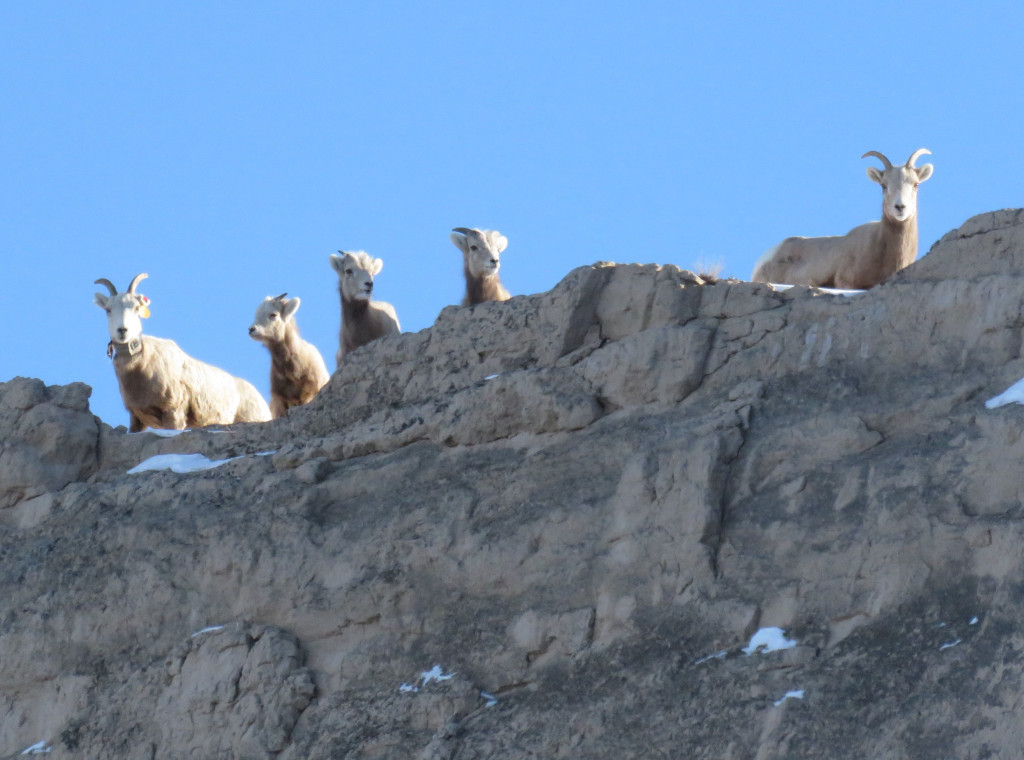November is a great time for viewing bighorn sheep in the Nebraska Panhandle.
Enlarge

Photo by Olivia DeRugna
By Olivia DaRugna, Wildlife Diversity Biologist
Before the 1900s, Audubon bighorn sheep inhabited parts of western Nebraska, including the Wildcat Hills, the Pine Ridge and along the North Platte River from the Wyoming state line to eastern Lincoln County. It was thought that the Audubon bighorn became extinct in the early 1900s, with its last stronghold being the South Dakota badlands. Since 1981, the Nebraska Game and Parks Commission has been reintroducing and monitoring Rocky Mountain bighorn sheep (Ovis canadensis canadensis) in the Panhandle. Now the population is approximately 300 sheep in the Pine Ridge and Wildcat Hills Biologically Unique Landscapes.
Expert Climbers
Bighorn sheep are well adapted to the rocky buttes of western Nebraska. Their light brown fur allows them to blend in easily with the brown grasses and cliff sides. If it were not for their white rumps, it would be difficult to spot them.
Watching these animals gracefully move along the cliffs and balancing on the thinnest ledges is something of a wonder. They are able to scale this steep terrain because of their unique hooves. The outer hooves are actually modified toenails that can snag onto any little protrusion, and the inner pad is soft and grips to the surface.
Appearance
Adult rams are a treat to view with their large, curled horns that can reach up to 45 inches long. Ewes, adult females, are about half the size of rams, weighing up to 150 pounds. While females also have horns, they are thinner and have only a slight curvature reaching between 6 and 13 inches. Yearling rams look similar to ewes, but their horns are wider at the base and can curl slightly longer.

Viewing Sheep
November is a great time for viewing these sheep in the Nebraska Panhandle, as they are in rut. During the rut and pre-rut, rams try to establish dominance to mate with ewes. This can involve head butting other rams and tending to a ewe by following her around and defending her from other rams. Even if you don’t see the rut behavior, you can still enjoy watching the herds graze on grasses and browse shrubs. Early mornings and evening are the best times for viewing the herds when they are most active.
While you are viewing sheep, you may see some individuals with collars or uniquely numbered ear tags. Biologists are closely monitoring the bighorn sheep herds, and the ear tags allow for easy identification of individuals in the field. The GPS collars allow biologists to remotely track the sheep’s movements and habitat use via satellite, while still allowing the locating of nearby sheep with telemetry equipment. Learn more about the population monitoring and tracking efforts.
Where to View Sheep
For the best chances of viewing Bighorn Sheep, visit Cedar Canyon Wildlife Management Area, Montz Point WMA or Williams Gap WMA in the Wildcat Hills BUL. In the Pine Ridge BUL, visit Fort Robinson State Park and WMA, Bighorn WMA, Ponderosa WMA, Peterson WMA and the Pine Ridge National Recreation Area (pastures 16 – 18). Beginning in mid-November, these WMAs become popular hunting locations, so take safety precautions and wear orange if visiting one of the WMAs during this time.
Watch sheep from a distance and avoid the temptation to get closer to avoid disturbing the herds. A spotting scope or binoculars are helpful in finding and viewing sheep along the buttes. As you scan the landscape, watch for their white rumps, which stand out against the brown landscape. Check the top of the buttes for sheep silhouettes.
Wildlife Viewing Events in November
Watchable Wildlife Small Grant applications are due Nov. 5. These grants support projects that seek to develop wildlife observation and nature-based experiences in Nebraska.
 Nebraskaland Magazine
Nebraskaland Magazine


